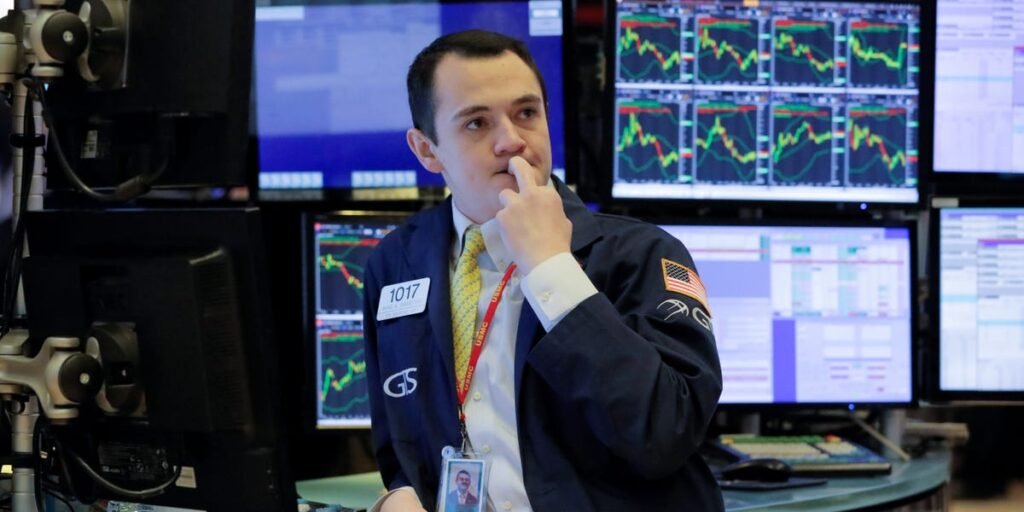- BCA Research predicts that the S&P 500 will plummet 32% in 2025 as the U.S. economy eventually suffers a recession.
- The firm said the Fed will not be able to halt a recession because it will take too long to cut interest rates.
- Rising unemployment and credit constraints will curb consumer spending and worsen the recession.
The stock market will crash 32% in 2025 because the Federal Reserve can’t stop a recession, according to Wall Street’s most bearish strategist.
Peter Berezin, chief global strategist at BCA Research, said in a recent note that the U.S. economy will experience a recession later this year or early 2025, and that downturn will send the S&P 500 down to 3,750.
“The consensus narrative of a soft landing is wrong. The US will fall into recession in late 2024 or early 2025. Growth in the rest of the world will also slow sharply,” Berezin said.
Berezin’s bearish outlook is based in part on his belief that the Fed is “reluctant” to cut interest rates and that the central bank will not significantly ease financial conditions until a recession is evident.
By then it will be too late.
Berezin stressed that the labor market is weakening, with job openings down significantly from their post-pandemic peak. The continued decline in job separations, employment rates, and recent downward revisions to the April and May employment reports also point to a slowdown in the labor market.
“Two years ago, a worker who lost their job could just cross the street to find a new job. That’s becoming harder and harder,” Berezin said.
The June jobs report showed the unemployment rate rose to 4.1% from 4.0%, another sign of some weakness in the job market.
Berezin said rising unemployment could ultimately lead consumers to cut spending in order to build up “precautionary savings,” which would come as rising delinquency rates narrow consumers’ borrowing capacity.
Ultimately, this will create a negative feedback loop throughout the economy and roil the stock market.
“With little available savings and further restricted credit, many households will have no choice but to curb spending. Less spending means less employment. Higher unemployment will curb income growth, which will lead to less spending and further higher unemployment,” Berezin explained.
And perhaps most importantly, the Fed’s plan to slow the economic decline by cutting interest rates simply isn’t working.
“It’s important to recognize that what matters for the economy is not the federal funds rate itself, but the interest rate that households and businesses actually pay,” Berezin said.
For example, the average mortgage interest rate paid by consumers is about 4%, but current mortgage rates are around 7%.
This means that even if the Fed cuts interest rates and mortgage rates fall, the average mortgage interest rates paid by consumers will continue to rise.
This principle also applies to loans that businesses and corporations may want to refinance in the coming years.
“These trends will lead to further defaults and cause pain in the banking system, as the problems that plagued regional banks last year remain unresolved,” Berezin said.


